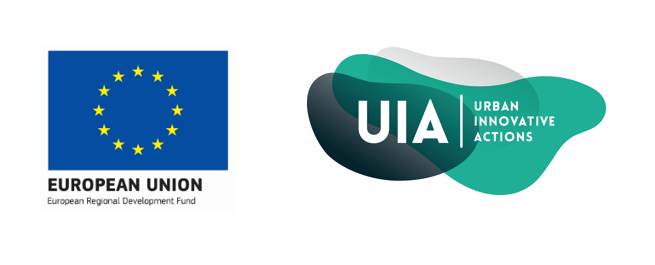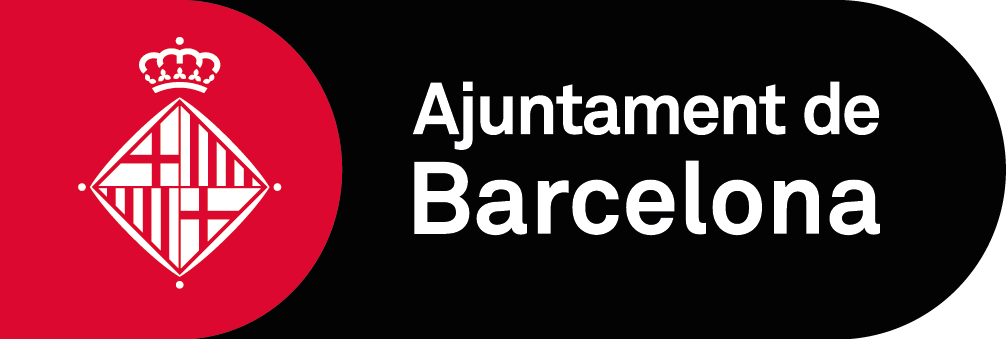
Climate shelters in schools

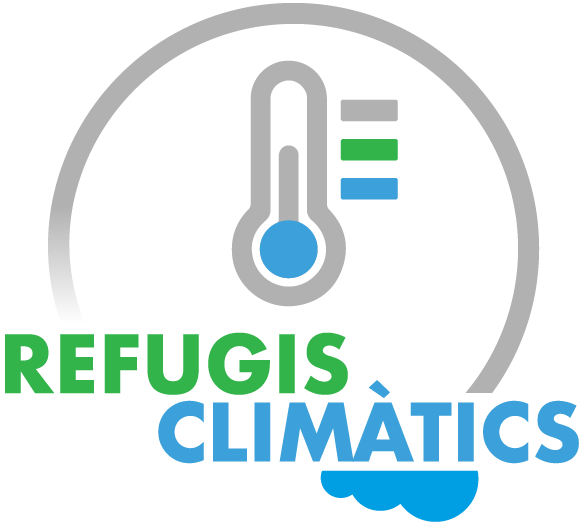
Climate change is happening now and is having an effect on people's health and quality of life. Barcelona is faced with the challenge of having to combat high temperatures which, according to climate forecasts, will have an impact on the city due to the effects of climate change.
Barcelona City Council has received funding from Urban Innovation Action (UIA), a European Commission programme as part of the ‘Adapting schools to climate change through green, blue and grey’, project. The projects proposes initiatives in eleven schools through a package of blue measures (incorporating water points), green measures (spaces for shade and vegetation) and grey measures (works on buildings to improve insulation).
School pupils and citizens alike will be able to enjoy these improvements, as school playgrounds will remain open throughout the summer. The project also has a teaching element to it, as children will take part in designing climate solutions and evaluating the measures taken. In parallel, various research centres will scientifically assess the results of measures taken in terms of health and climate comfort.
The UIA is an initiative that aims to find and test new solutions to sustainable urban development challenges that are relevant to all members of the European Union. The Barcelona project has received an ERDF subsidy for €4 million (more than €1 million contributed by the city) and a commitment has been made to carry it out from 2019 to 2022.
The project partners include Barcelona City Council, the Barcelona Education Consortium, the public service provider Barcelona Cicle de l'Aigua SA (BCASA), the Public Health Agency of Barcelona (ASPB), the UAB Institute for Environmental Science and Technology (ICTA-UAB), Barcelona Institute for Global Health (IS Global) and Vila Olímpica school.
What is the project about?
The aim is to convert eleven schools currently considered vulnerable to heat into climate shelters open to all city residents by implementing traditional solutions against heat in buildings and by transforming playgrounds through the introduction of vegetation, spaces for shade and water points.
Lines of work
![]()
Participation: pupils, the educational community and various institutions and experts who take part in the project will agree on the design of spaces and will define specific needs.
![]()
Educational project: the definition and follow-up of these measures will be included in the educational project, which will focus mainly on climate change information and training.
![]()
Opening up of spaces for citizens: the aim is that these spaces will not only be used by school pupils, but also by all city residents in the surroundings, who will have access to playgrounds outside of teaching timetables.
![]()
Health and evaluation: all changes will be monitored from the point of view of health and wellbeing, allowing us to assess the impact achieved on environmental, health, wellbeing and other parameters.
![]()
Replicability: through these measures, we are seeking to ensure that citizens and the school community understand the need to boost initiatives to adapt the city to climate change. We also hope that these measures are replicable in other buildings, particularly schools.
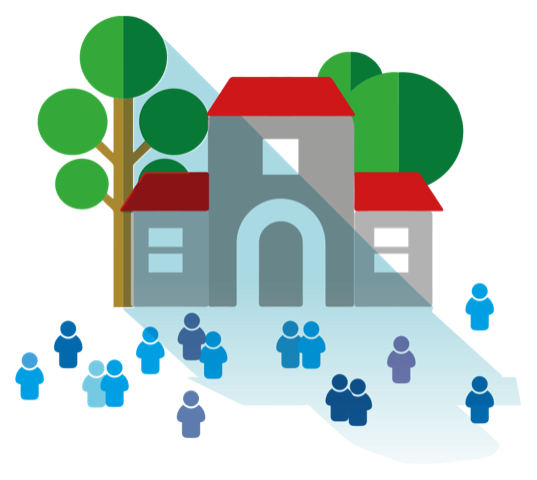
The schools selected
Barcelona Education Consortium invited all primary state schools in the city to take part in an application process. Forty-five schools took part, ten of which were selected, one per district. The selection of schools took into account climate criteria (degree of heat exposure, level of green coverage, etc.), intensity of building usage, state of the building and energy consumption, and current playground condition.
The eleven schools selected are as follows:
| DISTRICTE | NEIGHBOURHOOD | SCHOOL |
|---|---|---|
| Ciutat Vella | Sant Pere, Santa Caterina i la Ribera | Cervantes |
| L’Eixample | Nova Esquerra de l’Eixample | Els Llorers |
| Sants-Montjuïc | La Marina de Port | Ramon Casas |
| Les Corts | Les Corts | Ítaca |
| Sarrià - Sant Gervasi | El Putxet i el Farró | Poeta Foix |
| Gràcia | Vallcarca i els Penitents | Rius i Taulet |
| Horta-Guinardó | La Font d’en Fargas | Font d’en Fargas |
| Nou Barris | Les Roquetes | Antaviana (institut-escola) |
| Sant Andreu | Sant Andreu | Can Fabra |
| Sant Martí | El Poblenou | Poblenou |
| Sant Martí | El Poblenou | Vila Olímpica |
How have schools been transformed into Climate Shelters?
Outside spaces have been transformed, under a collaborative process between authorities, organisations and schools with educational projects involving children from every school to decide on the specific initiatives.
These green, blue and grey initiatives have helped to reclaim some 1,000 square metres of natural land with plants in school playgrounds, replacing concrete ground, and 2,213 square metres of new spaces have been created, shaded by pergolas and awnings. In addition, a total of 74 trees have been planted, equivalent to the number of trees found in two entire blocks in Eixample, and 26 new water points have been installed.
You can check a few of the most outstanding proposals here.
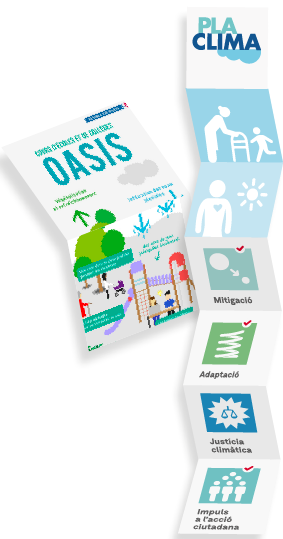
Paris, twin project
The city of Paris is promoting a similar project, the Paris OASIS project, approved in the same UIA meeting and also focused on adapting to climate change through school-based initiatives.
Adapting and the Climate Plan
The Barcelona Climate Plan is a cross-departmental plan incorporating 242 measures up to the year 2030. A strategic plan with proposals to mitigate the effects of climate change, to adapt the city, to promote climate justice and to boost citizen participation.
Among others, it gathers together measures to increase the city's adaptation and resilience to the effects of climate change that are already starting to be seen. Line of action 1 specifically relates to citizen wellbeing, ‘the primary persons’, and when it comes to ‘heat prevention’, it involves improving thermal comfort in the city’s public spaces and buildings and creating a network of places that give shelter in high temperatures, in order to protect people’s health and provide special care for the most vulnerable groups.


